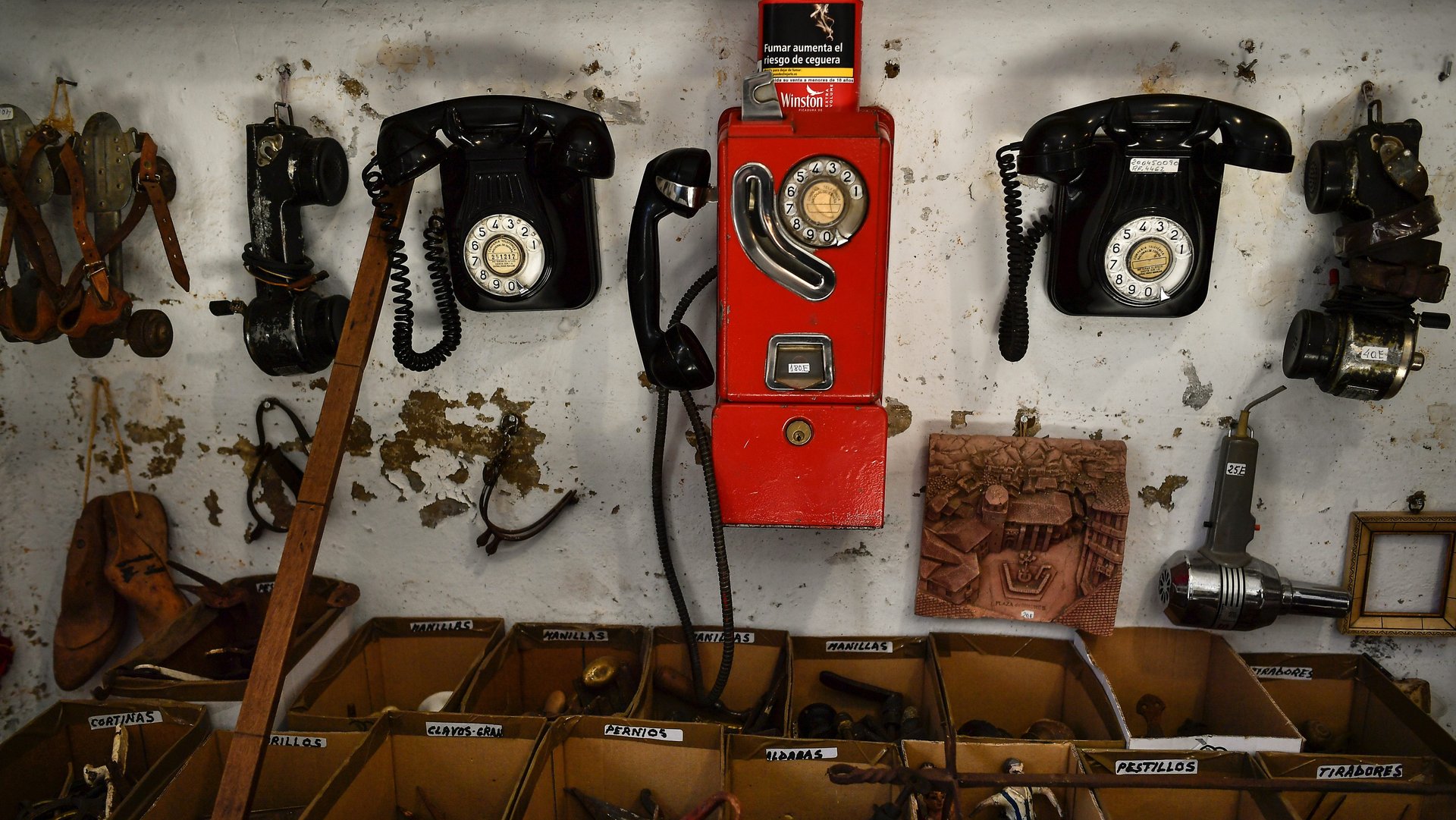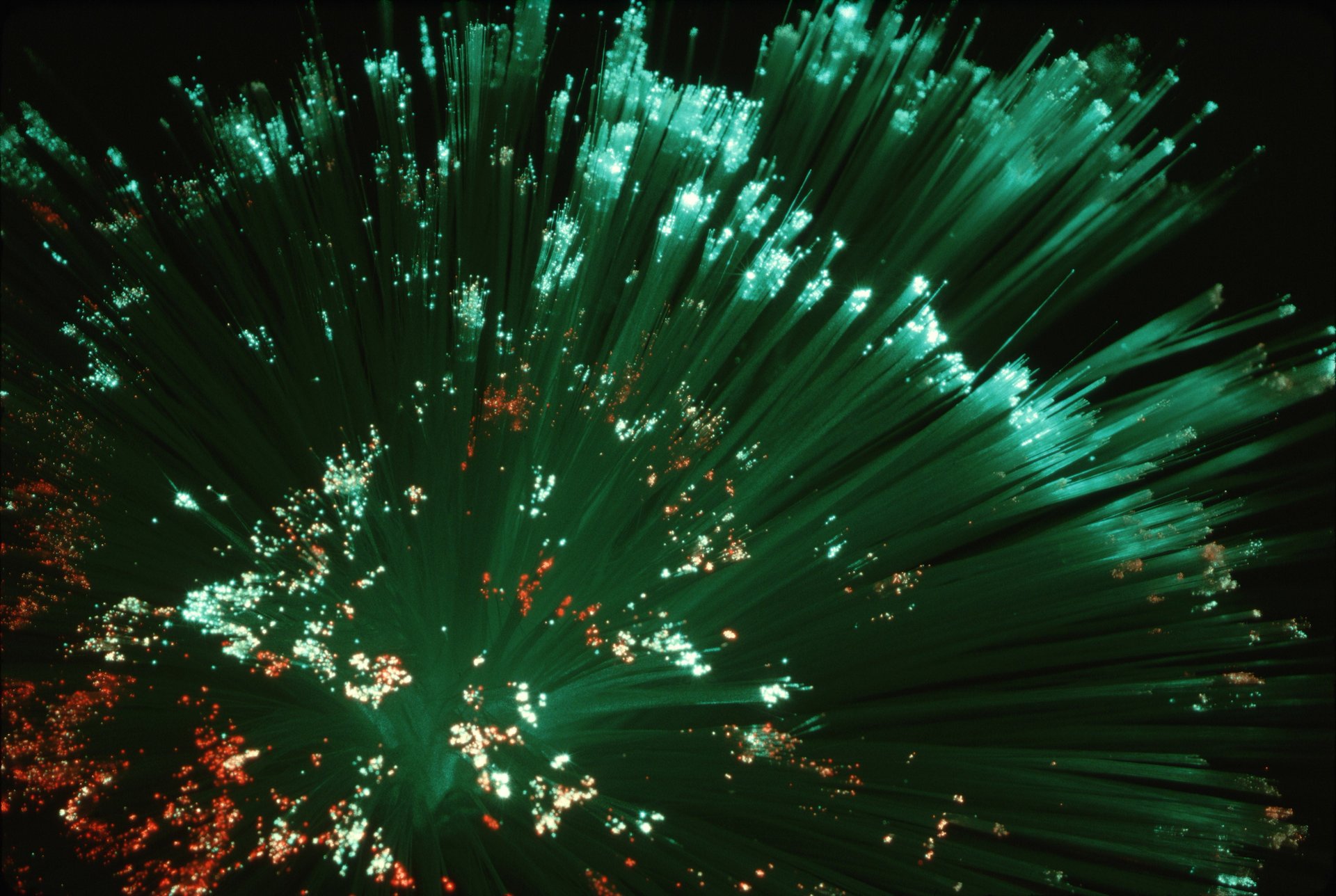The 10 ways life would be different without broadband
Most of us think of the internet as existing “virtually,” yet cyberspace requires a physical infrastructure that is mostly hidden from view. And it requires workers to go under city streets to tie things together.


Most of us think of the internet as existing “virtually,” yet cyberspace requires a physical infrastructure that is mostly hidden from view. And it requires workers to go under city streets to tie things together.
They run fiber-optic cables—incredibly thin strands of glass that carry the super-fast data signals providing high-speed internet, or “broadband,” service—and connect them underground to commercial buildings.
Electricians are the literal backbone of the broadband network most of us now use without giving it a second thought. The fiber they handle, under city streets and across the US, is why many of the things we take for granted today exist at all.
Legislation enacted in the late 1990s gave birth to upstarts that would introduce broadband to residential consumers. Although expensive at first, prices quickly began to drop. By the early 2000s, broadband started becoming an everyday service in homes.
As Om Malik noted in GigaOm a decade ago, the music-sharing platform Napster was really the catalyst for widespread broadband adoption in the US. Residential consumers started to sign up for high-speed internet provided by phone companies (DSL, or digital subscriber line, service) and cable companies. That’s when things changed forever.
In the years that followed, the high-speed internet created new industries while making certain others all but obsolete. Expedia and Priceline replaced travel agents. Online brokerages like E*Trade allowed people to be their own brokers. And buying music no longer meant a trip to the record store.

Without broadband connections for our computers, phones, and appliances, there would be no Skype, Zoom GoToMeeting, or Bluejeans. We’d still be tethered to DVDs, CDs, and physical data storage. Balancing your checkbook would still be a routine household task, standing in line at the bank a regular event. Streaming music would not be possible; Columbia House’s mail-order music would still be an option for you. (It does still exist, believe it or not, but traffics only in DVDs these days.)
We should note that about 8% of the US population, or more than 24 million people—many in rural communities—still don’t have access to broadband service, according to the Federal Communications Commission.
According to a 2018 Pew Research Center survey, 24% of rural adults have a “major problem” accessing high-speed internet. Another 34% say its a “minor problem.” In total, 58%—six in 10—rural Americans have trouble accessing broadband.
Though it’s reportedly a good thing, on balance: A 2017 study by Ericsson found that doubling broadband speeds can increase a country’s GDP by 0.3%.
“This is not just about delivering connectivity for connectivity’s sake—or even about giving people access to the undoubted benefits of social communications,” Hamadoun Touré, secretary-general of the UN’s International Telecommunications Union, has said. “It is about leveraging the power of broadband technologies—and especially mobile technologies—to make the world a better place.”
Here’s a look at what broadband has brought to the world:

10 things that wouldn’t be the same without broadband
1. Driving
Tesla’s autopilot technology (introduced 2015) sends data to and from its vehicles via high-speed wireless connections, as well as using those networks to push out over-the-air software updates. Volkswagen (2018), Ford (2016), and Honda (2015) all make cloud-connected cars, which power everything from navigation services to collision-avoidance technology. A Verizon app called Hum (2015) aims to keep you “aware of your car’s health, [and] can send emergency services if it detects a crash.” Letting your insurance company track your driving can lead to savings for being safe on the road—but most Americans say it’s not worth the privacy tradeoff.
Market researchers estimate there will be more than 70 million connected vehicles on the road by 2023.
2. Watching
In order to “Netflix and chill,” (Netflix’s streaming service was introduced in 2007) you’ll need a minimum internet connection speed of 0.5 Mbps (megabits per second). The lowest possible data speed that will allow access to Netflix is about double the speed of the fastest late-1990s DSL connections. Without broadband, there would be no Hulu (2008), no YouTube (2005), no streaming network TV—and you’d still be tethered to the cable company.
Worldwide streaming video subscriptions hit 613 million in 2018, up 27% from the year before.
3. Wandering
With the advent of Google Maps (and to a lesser degree, Apple Maps), it’s hard to get lost anymore. (Still, there is no signal at all in certain parts of the country, which is one reason why the American Automobile Association (AAA) continues to provide paper maps to members.) Location services on other apps like Uber and Lyft bring drivers to your doorstep, and let friends see where you are at all times. You can also track your dog walker’s precise coordinates in real-time thanks to broadband, as well as monitor the turn-by-turn progress of your Amazon delivery driver.
About 155 million people use Google Maps each month. Apple Maps has roughly 23 million monthly users, by comparison. Yahoo! Maps boasts a comparatively paltry 2.8 million monthly users.
4. Playing
Without high-speed internet service—there would be no Playstation Now (2014), no Xbox Live (2002), no Fortnite (2017). Gaming console makers like Microsoft and Sony say their systems require at least 3 Mbps of download speed and 0.5 Mbps to 1 Mbps of upload speed.
As of March 2019, Fortnite had 250 million registered users. Playstation Now currently has about 700,000 subscribers, and Xbox Live, roughly 64 million.
5. Snooping (and planting and inspecting and delivering)
Unmanned aerial vehicles (UAV), more commonly known as drones, rely on broadband data links for a variety of functions, from scientific data collection to conducting faraway reconnaissance and military supply operations. Drones are now being used for package deliveries (2019), to inspect mines (2017), and by lifeguards (2018), farmers (2006), and animal advocates who fly mapping drones (2015) to locate strays.
There are more than 1.25 million drones in use in the United States alone, according to estimates by the Federal Aviation Administration. And while the market for non-commercial, or “hobby” drones, is cooling, the number of commercial drones used by businesses is expected to triple by 2023.
6. Learning
Primary and secondary classrooms went digital at least a decade ago, and the number of college students taking online courses has been on the rise for almost 15 years even as overall enrollment has fallen. There are now iPads built exclusively (2018) for student use, research universities backing digital ed startups (2019), and institutions like Harvard and MIT offering free courses online (2012).
There were an estimated 501 full-time K-12 online schools in the US during the 2017-2018 school year, serving nearly 300,000 students. Though critics say online schools do not serve young children as well as traditional schools.
7. Flying
Without high-speed data connections, we’d still be reading magazines on airplanes. Satellites supply the high-speed broadband signal that powers in-flight wifi (2007) and streaming TV (2015), as well as operational support to the aircraft and flight crew, maximizing fuel efficiency and helping to avoid bad weather.
A study from the London School of Economics and funded by satellite company Inmarsat estimates the “inflight connectivity” (IFC) market will be worth some $130 billion by 2035, contributing $30 billion to overall airline revenue. For comparison’s sake, IFC offerings contributed $900 million toward airline revenues in 2018.
8. Listening
In the days before broadband, a midnight urge to hear a certain song meant waiting until morning, then going to the record store to see if they had the album. A massive hit meant going platinum, or, selling a million copies. By comparison, Apple Music (2015) today has 60 million paying subscribers in the US. Globally, Spotify (2006) is number one, becoming the first streaming music service to hit 100 million paying subscribers, which the Swedish company announced in early 2019.
9. Reading
E-readers (2004) mean never running out of things to read, even on vacation—something unthinkable back in the pre-broadband era. Still, the Amazon Kindle (2007) has not led to the extinction of the physical book. About 40% of Americans claim they continue to read exclusively print books, according to a 2018 Pew survey. Roughly 30% told Pew they read a mix of both, while only 7% say they read solely electronic formats.
10. Eating
Fridges that shop for you (2000). Ovens that cook for you (2003). “Smart” coffee mugs that maintain the perfect temperature (2017). These appliances use high-speed internet connections to access the cloud, which is how they receive commands and communicate with you.
Connected kitchen appliances haven’t really taken off, but online food delivery via apps like GrubHub (2011) and DoorDash (2013) are now part of a $17 billion market.

What may lie ahead
America’s mobile broadband network is currently in its fourth generation, with its present configuration known as 4G LTE. There is now a push to upgrade the nationwide backbone to 5G. Large increases in speed and capacity have the potential to help spur further innovation and deliver more services to consumers at lower prices—but not necessarily for everyone. Even then, only if significant investment is made by carriers.
While some like where this is all going, others say we should unplug (neo-Luddism is in fact having a resurgence). The healthiest place to be, most likely, lies somewhere in between those two extremes.
Of course, civilization somehow got along just fine for millennia without high-speed internet. And even today, roughly 10% of Americans say they don’t use the internet at all.